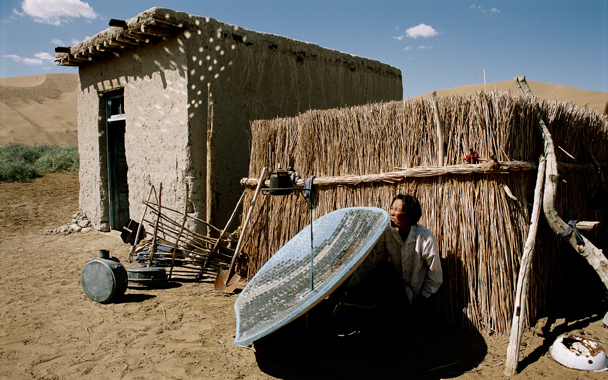A few years ago, I visited the cramped wooden hut of a Lahu tribal elder named Jamor, who lived high in the hills of northern Thailand. It was a hot, dry day with a crisp, blue sky and brilliant light outside. But we stepped inside to a world of black, a house so caked in soot from years of endless cooking fires it looked as though the walls had been lacquered. The scene could have been anywhere in rural Asia. A fire smoldered in a rectangular pit. “I don’t need a kitchen,” Jamor said. “I cook here and eat here. The fire keeps insects away.” I imagined Jamor’s lungs to be as black as the walls.
Researchers have recently determined that soot, or black carbon, is a huge contributor to global climate change. That same indoor air pollution kills up to 1.6 million people a year, according to the World Health Organization. Women and children are most susceptible because they spend the most time around the cooking fire. This predicament has sent scientists, agencies, and institutes scrambling to supply the developing world with more efficient cooking stoves that save trees and emit fewer harmful particles. Some of the newfangled stoves rely on solar power, others turn trash into fuel, and still more simply burn wood more efficiently.
All good news, but a few key issues remain. Price is one of them. And some of these stoves cost $20—easily a month’s wages for many of the world’s poorest people. Other folks rely on donations or subsidies (and stove parts that must be imported), which is not necessarily sustainable. At least one solar-stove project aims to use carbon credits to fund fuel-efficient stoves, thereby making them free for their users. That might work in some places—when it’s sunny—but what about those six months of monsoon rains? (Plus, this particular stove isn’t powerful enough to fry food.)
A smokeless stove also leads to a critical question about taste and tradition. Many cooks swear by the flavor of fire. Smoke is an ancient ingredient in numerous Asian cuisines, which is precisely what a young Burmese woman announced to a large crowd gathered at an April Earth Day celebration at the American Center in Yangon, Myanmar. When the subject of cooking fires came up, she said she had a hard time persuading her relatives to abandon smoky stoves. Fire is tradition, and it’s available. She noted another problem: Most locals have no idea what “environmental awareness” means. Her country’s government doesn’t exactly welcome education, nor are NGOs visiting the poorest, most remote regions. That means it’s up to the Burmese people to work individually, using their own time and money to make small changes, step by step. It’s slow, but sometimes it works.
That was the only surefire solution to come from the conversation: empathy and effort. Fourteen years ago, author C. J. Jepma pointed out in Tropical Deforestation: A Socio-Economic Approach that successful fuel conservation projects are those in which the people who design new gadgets work with—not just in the name of—the people who use them. Common sense, right? That means Jamor needs better protection from malaria-carrying mosquitoes before he gets rid of the fire that keeps the insects away. And it means his family needs a new way to cure the meats and dry the vegetables that normally hang above the family fire. I’m betting Jamor wouldn’t forgo smoked pork for carbon credits. But he might for an empathetic friend who drinks his tea and listens to his stories.




 Pinterest
Pinterest


